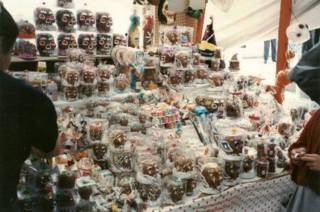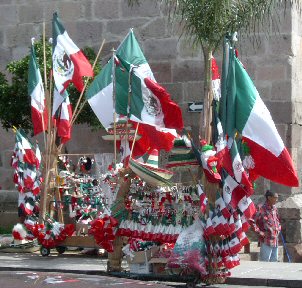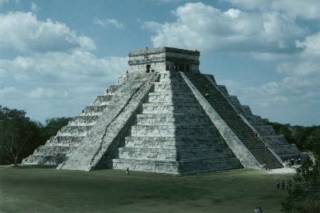20 de noviembre
Today is 20 de noviembre - actually in Japan it's just gone midnight so it's actually the 21st, but let's not worry too much about that. In Mexico today is a national holiday. This year it’s on a Saturday meaning that the children don’t get any extra days of school but such is life.
So, what is 20 (veinte) de noviembre? It’s the anniversary of the Mexican Revolution. Today there will be (have been) parades in the streets. I think this is the most important parade day of the year. Everyone will be out in force, either marching or watching.
But why this day? Well, it’s the day it all officially started. “How can a revolution start on a specific day?” you may ask and that would be a valid question. Let’s have a little Mexican history lesson. The president of the time was a certain Porfirio Diaz who, originally, had been a decorated war hero. But he became president and stayed there, forever, or so it seemed. When he won the elections of 1910 his opponent, Francisco I. Madero announced that the elections had been fraudulent. He then escaped across the border to the US where he wrote his Plan de San Luis (San Luis Plan) where he set out his opposition to the current government and called other opponents to arms. He said that the uprising should begin on the 20th of November, 1910, which is why this is the day when Mexicans remember the revolution.
The Mexican Revolution is extremely complicated and went on for years. People betray each other and change sides all over the place. Too many people were killed and many more displaced. It’s way too complicated to get into here though I might give it a go on another day. It is very interesting though. There are also several highly interesting (colourful?) characters whose lives make for interesting reading too, though that might also be of interest.
As for places relating to the revolution a couple come to mind. First of all in Mexico City there is a huge arch which commemorates the revolution and has the ashes (or remains) of 4 of the main leaders buried in it. Underneath the arch is the Revolution Museum, which was a strange little rather unorganized place, the last time I went, though that was several years ago.
Somewhere else that comes to mind is the city of Zacatecas, where one of the many important battles took place. Up on the top of a hill called the Cerro de la Bufa there’s another small museum relating to the Revolution. There are also 3 huge bronze (?) statues of revolutionary heroes. I have a photo of the one of Francisco "Pancho" Villa.
So, what is 20 (veinte) de noviembre? It’s the anniversary of the Mexican Revolution. Today there will be (have been) parades in the streets. I think this is the most important parade day of the year. Everyone will be out in force, either marching or watching.
But why this day? Well, it’s the day it all officially started. “How can a revolution start on a specific day?” you may ask and that would be a valid question. Let’s have a little Mexican history lesson. The president of the time was a certain Porfirio Diaz who, originally, had been a decorated war hero. But he became president and stayed there, forever, or so it seemed. When he won the elections of 1910 his opponent, Francisco I. Madero announced that the elections had been fraudulent. He then escaped across the border to the US where he wrote his Plan de San Luis (San Luis Plan) where he set out his opposition to the current government and called other opponents to arms. He said that the uprising should begin on the 20th of November, 1910, which is why this is the day when Mexicans remember the revolution.
The Mexican Revolution is extremely complicated and went on for years. People betray each other and change sides all over the place. Too many people were killed and many more displaced. It’s way too complicated to get into here though I might give it a go on another day. It is very interesting though. There are also several highly interesting (colourful?) characters whose lives make for interesting reading too, though that might also be of interest.
As for places relating to the revolution a couple come to mind. First of all in Mexico City there is a huge arch which commemorates the revolution and has the ashes (or remains) of 4 of the main leaders buried in it. Underneath the arch is the Revolution Museum, which was a strange little rather unorganized place, the last time I went, though that was several years ago.
Somewhere else that comes to mind is the city of Zacatecas, where one of the many important battles took place. Up on the top of a hill called the Cerro de la Bufa there’s another small museum relating to the Revolution. There are also 3 huge bronze (?) statues of revolutionary heroes. I have a photo of the one of Francisco "Pancho" Villa.









